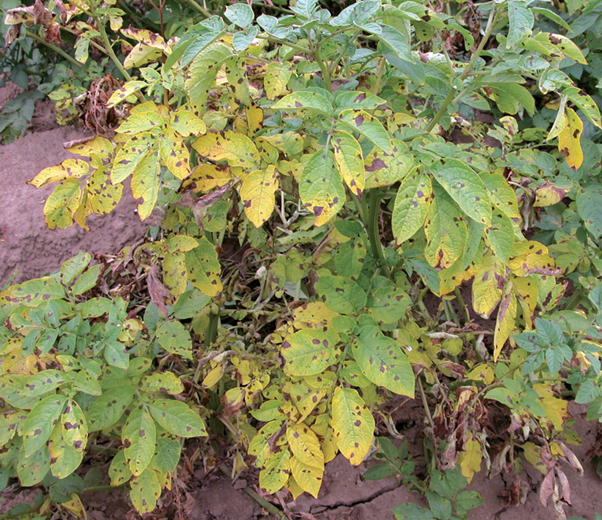Early blight is a fungal disease of potatoes caused by the fungus Alternaria solani.. The name, early blight, is somewhat misleading since the disease usually occurs on mature vines.
The fungus overwinters on debris from previously diseased plants. Airborne spores that infect new potato plants are produced on such debris and on volunteer potato and tomato plants. The disease is more serious under wet or humid conditions. The first lesions occur in the lower part of the plant where humidity is highest. Storms or wind and sand Injuries of leaf tissue ease the penetration of the fungi and increase infection level.
Foliar symptoms are dark brown to black necrosis. The first symptoms usually appear on the older leaves as small, dark, necrotic lesions, a few millimetres in diameter, which increase in size. Sometimes the lesions are restricted by leaf veins and take on an angular shape. The size of the necrosis can vary in width, from a few millimetres to 2 cm. Within larger lesions, concentric rings (so call target spot or bullseye) are visible, often surrounded by a chlorotic, yellowing zone. The chlorosis can extend to the whole infected leaf. The infected lesions enlarge and the whole leaf becomes necrotic which results in premature defoliation.
Here are a few examples:


.png?height=120&name=AgroScout_logo_Big_High_Resolution-(1).png)